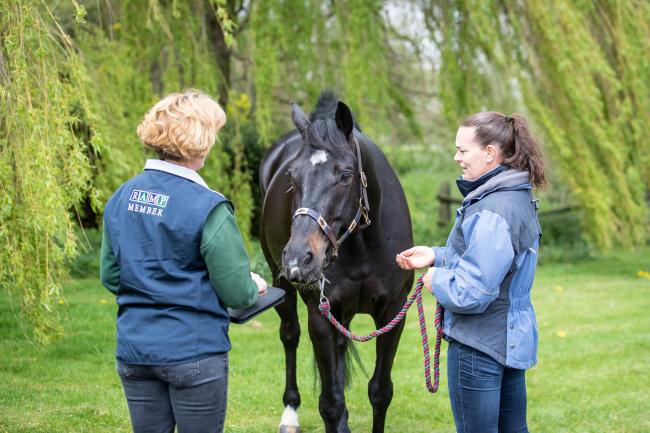Working within Government Guidelines

Following Government guidelines we move back into a lockdown in England and restrictions within other parts of the country. We expect that many practitioners have found ways to work while adhering to the guidelines of social distancing, PPE and risk assessments to date but we now need to be aware of the increased restrictions. In the absence of further restrictions advised by the RCVS we would just reiterate that each practitioner must continue to risk assess cases on an individual basis whilst maintaining safe working practice within the National restrictions/guidance. As a reminder these are the current guidelines for RAMP registrants: 1. Animals with demonstrable pain and welfare issues should be seen, these may include all pathologies. 2. A pre-visit risk assessment and telephone call is essential. Gain as much information prior to the visit as possible to minimise contact time. If appropriate, would the use of an oral sedative, supplied by the clients' vet to the client, mitigate risk? Do you have access to a responsible ‘safe’ handler that can attend with you? 3. No appointments should be made with anyone who has Covid symptoms or who is in close contact with anyone with Covid symptoms. There must be a 14-day quarantine period for them, prior to seeing them. Consider the suitability of wearing a mask to reduce the risk of the practitioner spreading Covid between yards/clients. Consider asking owners/handlers to wear masks to reduce the risk of transmission to the practitioner. 4. If you have symptoms do not treat, get tested, and await a clear result, prior to seeing any clients. 5. Animals with owners in the vulnerable categories should not be treated in the normal way. Try to see if any other approach other than face to face can be used. 6. Small animals should be seen in a clinic setting, (physio or vet) rather than home visits if possible, as cleanliness, disinfection and biosecurity are easier to control. If home visits are necessary, ensure that no other pets/family etc are present. In a clinic setting explore the possibility of treatment without owner present. Risk asses home visits very carefully. 7. Yard visits- Risk assess individual setups. As a professional you will be aware of the situations, and risks, at each of your regular yards. Some may be relatively ‘safe’, others less so. The decision to attend a client should be dictated by the risk assessment. 8. Home/yard visits, ask for gates to be opened and closed for you to minimise touching surfaces. No loose dogs/cats around that could transmit virus via petting, ensure animal is ready and waiting for you (ie no putting on headcollars, leads etc and unnecessary handling of owners equipment), carry your own soap and towels to wash between visits and ask for a fresh bucket of warm water or easy access to sink to wash. Accept no refreshments. 9. Other considerations, can the animal be left tied up with the owner at an appropriate distance? If not, are there any other strategies to improve safety and appropriately handle and restrain the animal. Is this a safe approach for you, the client and the animal? 10. Is this animal safe to treat with these restrictions in place? 11. All visits should be risk assessed and the results documented. Including those where treatment is refused and the reasons why, with documented details of the explanation to the client. 12. Only see regular clients if possible, this reduces the risk to you and the clients and eases the process of risk assessment. Do not ‘poach’ another practitioners’ clients. 13. For new referrals of non-regular clients have a close liaison with the vet re the risks and set up of the treatment environment, not just the clinical condition. 14. Payment- attempt to remove the need to handle payments. Request payment by BACS/credit card/paypal. This is not an exhaustive list of all the possible considerations and scenarios but some guidance. Professional judgement and expert opinion should be used at all stages to ensure the practitioners and the client’s safety while also minimising the risks of spreading Covid 19. The professional judgement of the practitioner, based on a thorough risk assessment, should always lead the decision as to whether it is safe to attend and treat an animal. Remember that owners should list practitioners as healthcare workers for the track and trace requirements including QR codes.